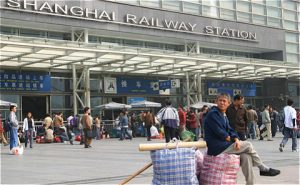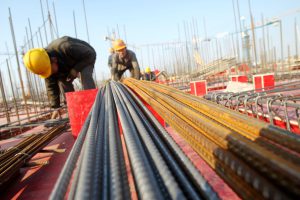As the country enters the urban age (more than half its population now lives in urban areas), a critical part of the Chinese dream is the “urban dream” – the promotion of urbanisation to generate household consumption to put the economy on a sustainable footing. Yet a third of the 700 million Chinese urban dwellers today are not truly “urbanised”. They are the migrant population or “floating population”, who do not have an urban hukou, or household registration. The hukou is a little red booklet that entitles the bearers to enjoy the full rights of urban citizens.
To accomplish real urbanisation, migrant workers need to become full urban residents (i.e. each will require an urban hukou). It’s no small task, to be sure, and can only be done gradually. In 2012, the size of the floating population was about 230 million. A rough projection shows that by 2030, the floating population, made up mostly of migrant workers from the countryside, will reach more than 300 million.
My proposal is to give all migrants an urban hukou within the next 15 years. This means granting hukou to about 20 million migrants per year. How should this annual quota be allocated? It could work in several steps over a period of 15 years from 2015: young college graduates would have first priority, followed by skilled workers and stable self-employed workers. Last but most important would be low-skilled workers. This will be more in line with the country’s economic and fiscal reality.
The three steps for reforming hukou
People with a college education are important taxpayers in many countries. In the US, many states and businesses know that one way to develop a high-value local economy is by building a large pool of college graduates, regardless of their origin. But in big cities in China, the hukou system still discriminates against graduates who come from other localities. Each year, the numbers of migrant graduates who gain a local hukou in large cities like Shanghai and Beijing is very small, ranging from a few hundred to perhaps one or two thousand out of hundreds of thousands of college-educated migrants in each city. Shenzhen last year made an effort to open the hukou system to college-graduate migrants. Through a points system, the city admitted several hundred thousand college graduates as permanently registered residents. The number far exceeds any achieved by other large cities and represents an important step in the right direction.
A key part of hukou reform lies in the second stage: lowering the threshold for skilled workers to obtain an urban household registration. The country will urgently require large numbers of better-educated, skilled workers and technicians, to operate high-tech and sophisticated equipment, in order to upgrade its industry and move up the value chain. Skilled workers also earn higher wages, and they can afford to pay for the urban services they receive.
I propose that China resolve the hukou situation of these two groups in the first five years. That done, from 2020 onwards, the country should concentrate on resolving the situation of the remaining migrant workers. By then, after another few years of development, China will be economically stronger and able to devote more financial resources to improving social equality. The government will therefore be in a better position to support migrant workers.
How much will it all cost?
Many have legitimate concerns that the costs of allowing migrants to use urban social services may be overwhelming. The main urban social services are public education, public housing, social security, and medical care. In recent years, several estimates have used quite detailed, comprehensive and publicly available statistical data to show that the cost of "urbanising" each person (i.e. the average cost of social services) is approximately 20,000 yuan in a small city, and 100,000 yuan in a large one. In 2010, the State Council Research Development Centre conducted a detailed survey and analysis in four medium-sized and large cities. The results showed that average lifetime cost of providing urban social services to a typical migrant worker, including family members, is about 80,000 yuan (in 2010 prices).
Below, I use a slightly higher figure (25% more), 100,000 yuan, to calculate the overall cost of urbanising the entire floating population and its fiscal impact. To transfer the household registrations of all the 230 million floating migrants to urban household registrations in one year would cost an astronomical 23 trillion yuan, or 44% of China’s 2012 GDP. However, over a 15-year time frame, assuming that the migrant population will reach 300million by 2030, the figure would come down to an average of 20 million people per year at an annual cost of 2 trillion yuan, or 3.8 % of the 2012 GDP. This is still a figure too high to be absorbed easily. However, this 100,000 yuan would not be spent in a single year, but over the remaining lifetime of a migrant. The average migrant worker is between 27 and 30 years old; assuming he or she lives for a further 40 years, the annual cost would be 2,500 yuan a year per person. In other words, offering urban hukou to 20 million people per year would cost 50 billion yuan, or 0.1 % of China’s GDP instead, a figure well within the country’s affordability.
A more useful approach would be to calculate the cost of urbanising migrant workers as a proportion of total government revenue. I computed that 50 billion yuan is 0.4 % of the government revenue in 2012. Of course, this is just the cost of the first year, and the cost would increase each year. By the last year of the plan (the 15th year), the cost would rise to the equivalent of 6 % of 2012 the government revenue. Even so, I think this is still within China’s affordability. The highest (6 %) is only a fraction of the annual growth increase of the government revenue in the past two years (23 % in 2011 and 13 % in 2012).
Leaving the numbers aside, we can also see that the majority of migrant workers are young, with the average being less than 30. In the early phase of the proposed program, the expenses of social welfare for migrants will be very low. Indeed, they are likely net contributors to the urban social welfare system in the early phases of settling in the city, paying more into the welfare system than taking away from the system. With the current urban population (especially in large cities) rapidly aging, the social security contributions of young migrant workers will be an important source in filling the fiscal gap in the urban social welfare system caused by the aging of urban residents.
Taking a wider perspective of viewing costs and benefits, one can see that the annual aggregate productivity of each migrant worker is certainly far larger, several times – possibly even several dozen times – the sum of the 2,500 yuan average cost of urban social services and his or her wages. Once migrant workers settle in cities and have long-term expectations of life in the city, they will make more investments in their own human capital, such as learning skills, as well making "investments" in the urban community in which they live.
The role of the state
Currently, authority over the hukou reform has basically been decentralised to local governments. Thus, hukou reform measures so far are limited to a local scope. In many locales, measures liberalising the urban hukou apply to only the local population, and exclude the main group that should be the target: the outside migrant workers. This is rather misplaced and has achieved little in pressing forward real hukou reform. Because hukou reform is an important aspect of China’s overall development strategy, any reform would require the strong leadership and planning of the central government. I suggest that China establish an authoritative hukou leading group at the central level to take charge of hukou reform and coordinate various parties.
In recent years, the State Council, the cabinet, has proposed implementing a policy encouraging migrant workers to settle down in small and medium cities, but not in the largest 40 cities. Some commentators have high hopes for this policy, claiming that it is an urbanisation path with “Chinese characteristics,” which can help the country avoid the "big city disease" by channeling migrants to small and medium cities. I think it is a gross misunderstanding.
That policy basically follows the old policy of “controlling the population growth of large cities” in the 1980s. The reality, however, is that China’s investment is still tilted toward major cities, and large cities develop more quickly. Migrant workers have for the most part not followed policy to small cities but have moved to the large cities because of jobs. With the current local government revenue system dominated by land sales revenues, local governments of small cities do not have the means to develop the cities because the land there cannot be sold at a good price.
Instead of encouraging migrants to the smaller cities, I would argue that at this stage of development in China, agglomeration economies still play large. Big cities have the wherewithal and talents to be the most efficient and most productive in many respects. China needs to harness this advantage by letting the market decide and achieve these economies. Government officials do not and cannot have the precise information to know which businesses will do best in which type of cities, and thus where there will be most jobs. Therefore, I would argue that hukou reform must be rolled out in all cities, large, medium and small and should not be limited to the last two. Hukou reform should include Beijing, Shanghai, Shenzhen, and other large cities, because that’s where jobs are found.
An earlier version of this article was published in Caixin online on June 13, 2013





